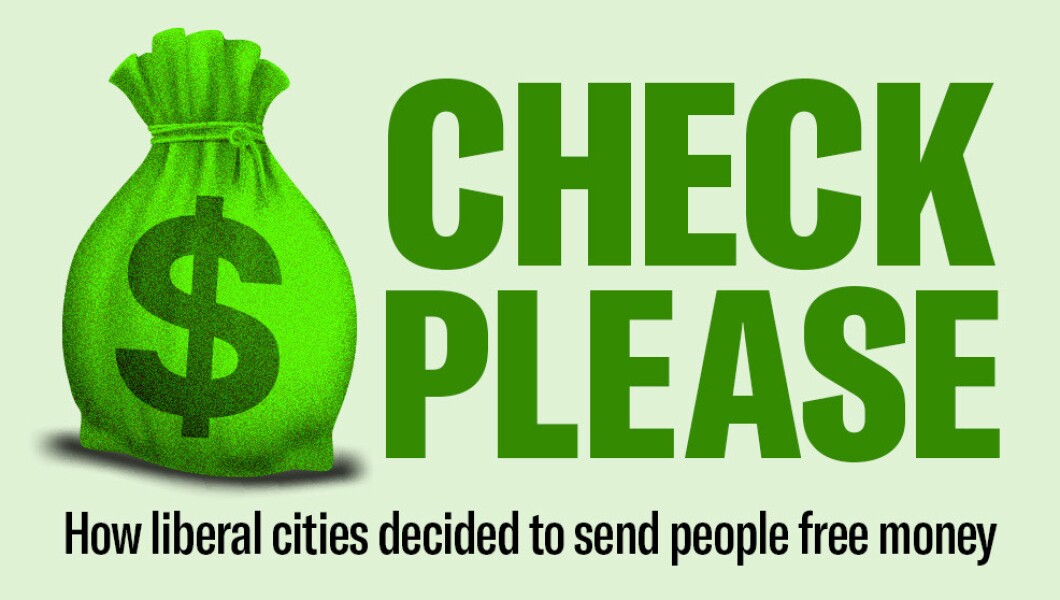
In the three years since the federal government started handing out checks to provide relief from the pandemic, the idea of no-strings-attached money for all has crept further into the mainstream.
Once the provenance of policy wonks and tech entrepreneurs, universal basic income or guaranteed income programs have become a reality in several cities.
MOUNTAIN VALLEY PIPELINE BACKED BY MANCHIN CLEARS FINAL HURDLE FOR CONSTRUCTION
Proponents say UBI, which provides all people in the program with a recurring cash payment regardless of their socioeconomic status, can help lift people out of poverty and protect them from financial ruin in the event of an emergency.
But some evidence suggests universal basic income and guaranteed income programs can provide little benefit despite the enormous costs.
Rochester, New York; Cambridge, Massachusetts; and Ann Arbor, Michigan, are among the cities launching guaranteed income programs this year. Other places, such as Alexandria, Virginia, had already moved to implement such programs over the last three years.
Some of the initiatives are privately funded.
Former Twitter CEO Jack Dorsey, for example, donated $15 million in 2020 to Mayors for a Guaranteed Income, an organization of dozens of mayors interested in starting pilot programs in their cities.
Others have relied on taxpayer funding.
Chicago used pandemic relief funds to set up a guaranteed income pilot program that paid some residents $500 per month for two years if they met age requirements and had a household income of 250% below the poverty line.
Los Angeles leaders voted to strip millions of dollars from the city’s police department budget in 2021 and put it toward a guaranteed income pilot program. It provided thousands of low-income residents with a $1,000 monthly payment over a year.

Data from some of the recent guaranteed income pilot programs show results that differ, in some ways, from the talking points in favor of the programs.
By far, the largest category of spending from the cash payments was at retail stores. More than 40% of the money went toward retail, compared to the 8% that was spent on housing and utility bills, according to a database compiled by Mayors for a Guaranteed Income, the Stanford Basic Income Lab, and the Center for Guaranteed Income Research.
Pandemic payments also appear to have offered few long-term benefits.
A study published last year found that cash payments handed out during the pandemic had no significant impact on the financial well-being, psychological well-being, or physical health of the recipients, even those who received larger sums of money.
After an initial burst of increased financial freedom from each payment, the recipients of the income generally faced the same rate of overdraft fees and late payment notices as those who received none at all.
The results “suggest that the cash allowed participants to spend more money, improving objective financial outcomes for the few weeks immediately following the transfer and then dissipating thereafter,” the study’s authors wrote.
Former Democratic presidential candidate Andrew Yang popularized universal basic income during the 2020 election when he ran on a pledge to establish one for everyone in the country.
Dubbed the “Freedom Dividend,” Yang’s proposal would have sent everyone older than 18 a monthly check for $1,000. Yang argued the payments would become necessary to cushion the blow of future disruption to the economy from automation.
The idea of basic income programs dates back decades, however. Martin Luther King Jr. called for a basic income program in 1967, and former President Richard Nixon even came close to implementing one in 1969.
Alaska has had the longest-running basic income program in the country, handing out checks to all residents since it was established in 1982.
The state’s Permanent Fund Dividend offers Alaskans a chance to pocket some of the profits from mining and oil drilling each year. The state deposits at least a quarter of its energy revenue into the fund every year and uses a complicated formula to determine how much residents will receive based on the fund’s performance that year.
In 2022, the Permanent Fund Dividend payment was $3,284.
Basic income proponents note that Alaska’s program has proved a relative success. The Permanent Fund Dividend cut poverty levels, a 2016 analysis found, and has remained enormously popular. Some studies have found the payments didn’t cause Alaskans to stop working, rebutting a common concern of basic income opponents.
But skeptics say the Alaska payment program isn’t a perfect test case for how successful a broader basic income program could be.
Because the payments fluctuate based on how much revenue the state makes in any given year, the program does not provide the level of security that a consistent payment amount would offer recipients.
Other test cases of basic income programs have suggested that handing out checks can indeed dissuade people from working.
CLICK HERE TO READ MORE FROM THE WASHINGTON EXAMINER
Enhanced unemployment benefits and multiple rounds of stimulus checks during the pandemic preceded a labor shortage that persisted as millions stopped looking for work over the past three years.
The U.S. Chamber of Commerce said this month that many people cited the increase in savings they earned from pocketing the pandemic relief payments and curtailing their travel during lockdowns as a reason why searching for work was less important.




